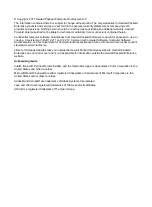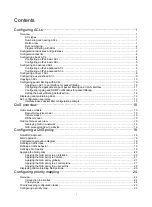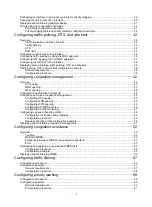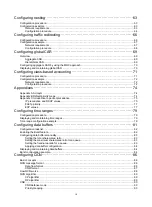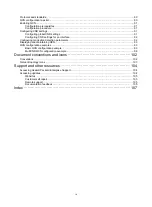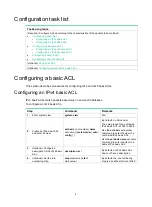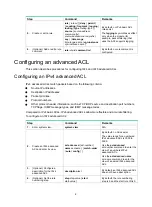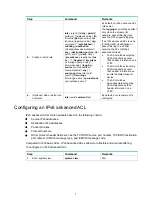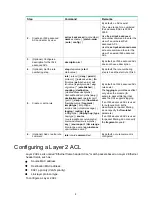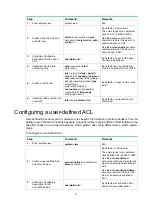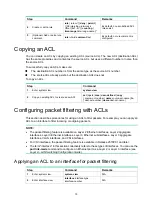
1
Configuring ACLs
Overview
An access control list (ACL) is a set of rules for identifying traffic based on criteria such as source IP
address, destination IP address, and port number. The rules are also called permit or deny
statements.
ACLs are primarily used for packet filtering. "
Configuring packet filtering with ACLs
" provides an
example. You can use ACLs in QoS, security, routing, and other modules for identifying traffic. The
packet drop or forwarding decisions depend on the modules that use ACLs.
ACL types
Type ACL
number
IP version
Match criteria
Basic ACLs
2000 to 2999
IPv4
Source IPv4 address.
IPv6
Source IPv6 address.
Advanced ACLs
3000 to 3999
IPv4
Source IPv4 address, destination IPv4
address, packet priority, protocol number, and
other Layer 3 and Layer 4 header fields.
IPv6
Source IPv6 address, destination IPv6
address, packet priority, protocol number, and
other Layer 3 and Layer 4 header fields.
Layer 2 ACLs
4000 to 4999
IPv4 and IPv6
Layer 2 header fields, such as source and
destination MAC addresses, 802.1p priority,
and link layer protocol type.
User-defined ACLs
5000 to 5999
IPv4 and IPv6
User specified matching patterns in protocol
headers.
Numbering and naming ACLs
When creating an ACL, you must assign it a number or name for identification. You can specify an
existing ACL by its number or name. Each ACL type has a unique range of ACL numbers.
For an IPv4 basic or advanced ACL, its ACL number or name must be unique in IPv4. For an IPv6
basic or advanced ACL, its ACL number and name must be unique in IPv6. For an ACL of some
other type, its number or name must be globally unique.
Match order
The rules in an ACL are sorted in a specific order. When a packet matches a rule, the device stops
the match process and performs the action defined in the rule. If an ACL contains overlapping or
conflicting rules, the matching result and action to take depend on the rule order.
The following ACL match orders are available:
•
config
—Sorts ACL rules in ascending order of rule ID. A rule with a lower ID is matched before
a rule with a higher ID. If you use this method, check the rules and their order carefully.
NOTE:
The match order of user-defined ACLs can only be
config
.
Summary of Contents for FlexFabric 5940 Series
Page 23: ...17 Figure 3 QoS processing flow ...
Page 84: ...78 Figure 26 MPLS label structure ...
Page 91: ...85 Switch burst mode enable ...


